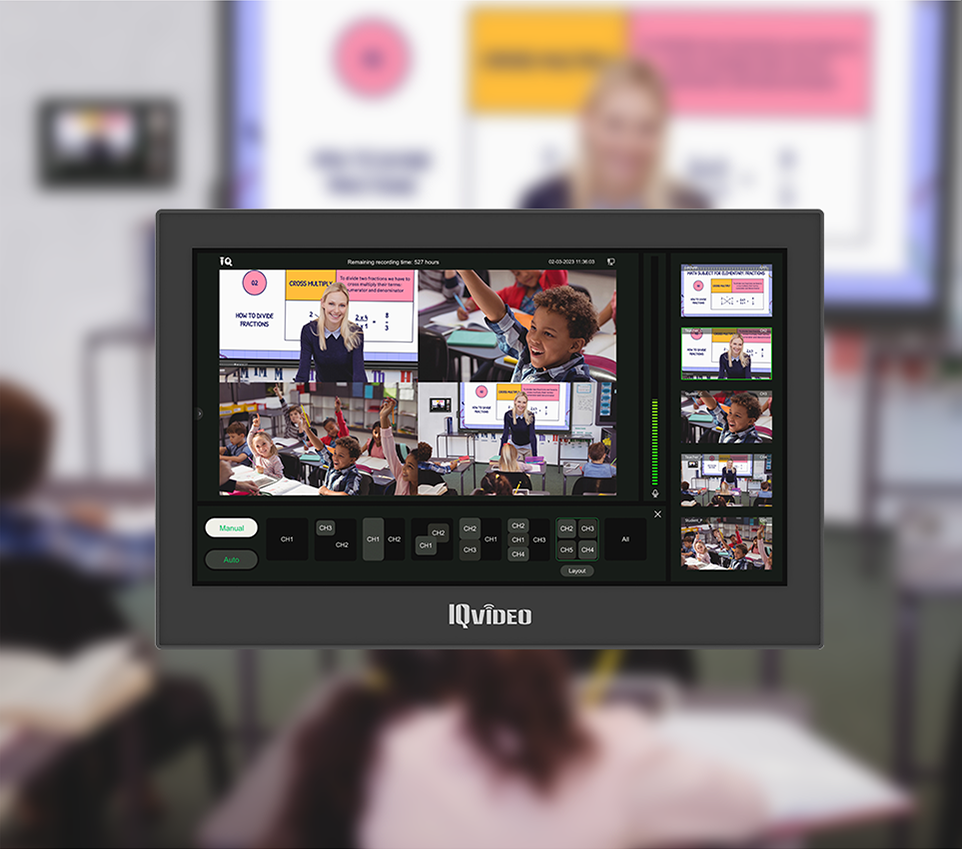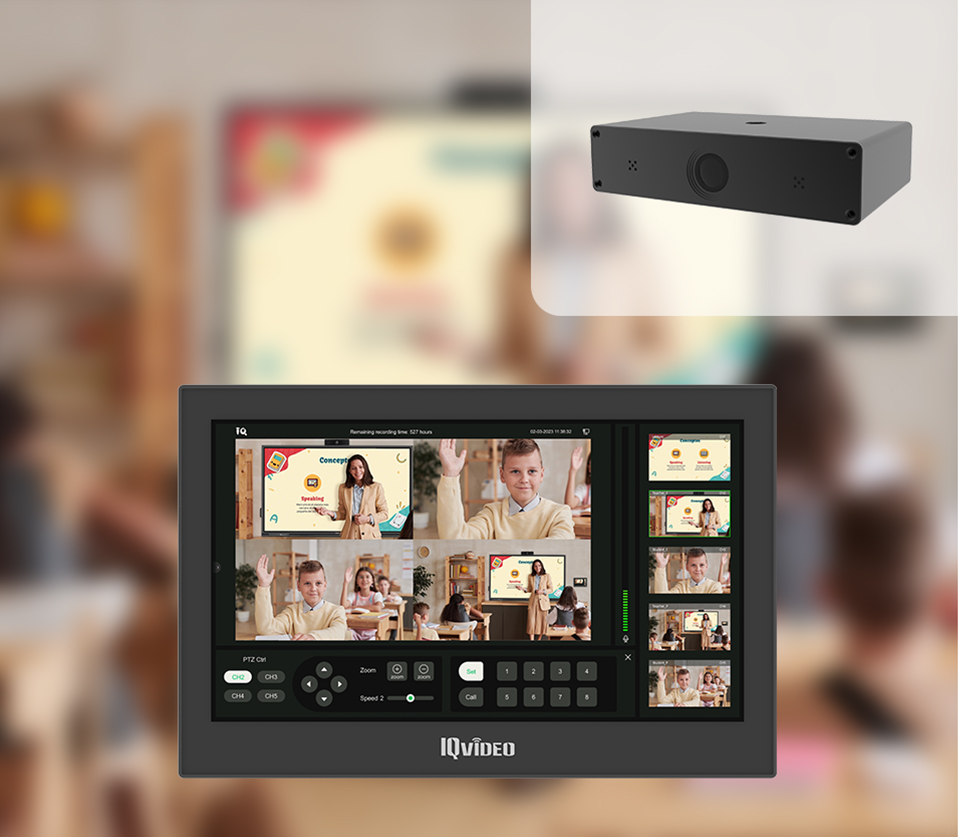
Unlocking Educational Frontiers: Hybrid Learning and the Power of Lecture Capture Systems
In the dynamic landscape of education, Hybrid Learning has emerged as a transformative force, reshaping traditional teaching methodologies and introducing a harmonious blend of in-person and online learning. This comprehensive guide aims to provide an in-depth exploration of Hybrid Learning and elucidate how Lecture Capture Systems contribute to an enriched and effective learning experience. Let’s embark on a journey to understand the nuances of this educational paradigm and discover the myriad ways in which technology is revolutionizing the classroom.

The Essence of Hybrid Learning
Evolution of Education
Traditional Education Methods
Traditional education methods have been the cornerstone of academic instruction for centuries, rooted in face-to-face interactions within physical classrooms. The teacher-student dynamic primarily occurred in real-time, limiting the accessibility of educational resources beyond the classroom setting.
The Need for Adaptive Approaches
As societal and technological landscapes evolved, there arose a need for adaptive educational approaches. Traditional methods faced challenges in catering to diverse learning styles and addressing the changing demands of a globalized, technology-driven world. This led to the exploration of hybrid learning as a response to the limitations of traditional models.
Defining Hybrid Learning
Blend of In-Person and Online Learning
Hybrid learning, also known as blended learning, is characterized by a thoughtful integration of in-person and online learning components. It seeks to strike a balance between the benefits of face-to-face interactions in physical classrooms and the advantages offered by digital technologies and online platforms.
Customized Learning Paths
One of the defining aspects of hybrid learning is its flexibility in accommodating diverse learning styles. Students can engage with course content through a variety of mediums, such as in-person lectures, online discussions, multimedia resources, and interactive activities. This customization allows learners to navigate their educational journey in a way that suits their individual preferences and needs.

Benefits for Educators and Students
Flexibility for Educators
Hybrid learning empowers educators with greater flexibility in instructional delivery. Teachers can leverage a variety of teaching methods, including traditional lectures, interactive discussions, and multimedia presentations. This adaptability enables educators to cater to the diverse needs of their students.
Enhanced Student Engagement
For students, hybrid learning opens up new avenues for engagement. Interactive online modules, multimedia resources, and collaborative online discussions contribute to a more dynamic and participatory learning experience. Students are not confined to passive reception of information but actively contribute to their own learning process.
Understanding Lecture Capture
A Dynamic Educational Tool
Lecture Capture Systems represent a dynamic tool within the educational landscape. These systems go beyond traditional note-taking by capturing not only the spoken content of lectures but also visual elements, presentations, and annotations made by the instructor. This comprehensive approach ensures that students have access to a rich and detailed record of the entire learning session.
Accessibility Beyond Physical Presence
One of the core advantages of Lecture Capture is its ability to transcend physical constraints. Students no longer need to be physically present in the classroom to benefit from the lecture. Recorded sessions can be accessed at any time and from any location, accommodating students with diverse schedules and those facing geographical challenges.

Integration with Hybrid Learning
Seamless Blend of In-Person and Online Components
The integration of Lecture Capture Systems with hybrid learning environments offers a seamless blend of in-person and online components. Lectures delivered in the physical classroom can be recorded and made available online, providing students with the flexibility to revisit the content at their own pace. This integration supports the fundamental principles of hybrid learning, allowing students to engage with educational material in various modalities.
Real-World Examples
Examining real-world examples of successful integration provides valuable insights into the practical benefits of combining Lecture Capture with hybrid learning. Educational institutions that have effectively implemented these systems often report increased student satisfaction, improved learning outcomes, and enhanced accessibility. Case studies showcasing diverse implementation strategies can serve as inspiration for educators and institutions considering similar approaches.
Promoting Accessibility
Overcoming Geographic Barriers
Lecture Capture Systems play a pivotal role in promoting accessibility, particularly for students facing geographic barriers. Individuals residing in remote locations or those unable to attend physical classes due to various constraints can access recorded lectures. This inclusivity ensures that education is not limited by geographical boundaries, contributing to a more equitable and globally accessible learning experience.
Catering to Diverse Learning Needs
Accessibility also extends to catering to diverse learning needs. Students with different learning styles, preferences, or those requiring additional support can benefit from the flexibility offered by Lecture Capture. Visual learners can revisit visual aids, while those who prefer auditory learning can listen to lectures multiple times, enhancing comprehension and retention.
Enhancing Student Engagement
Interactive Elements within Lecture Capture
Lecture Capture Systems are not confined to passive content consumption. The integration of interactive elements, such as quizzes, polls, and collaborative features, enhances student engagement. These interactive components transform recorded lectures into dynamic learning experiences, fostering active participation and knowledge application beyond the traditional classroom setting.
Facilitating Active Participation
Encouraging active participation is a cornerstone of effective learning. Lecture Capture facilitates active engagement by allowing students to pose questions, participate in discussions, and contribute to collaborative activities, even when accessing recorded content. This approach bridges the gap between physical and virtual learning spaces, fostering a sense of community and shared learning experiences.
Facilitating Self-Paced Learning
Empowering Self-Directed Learners
Recorded lectures empower students to become self-directed learners. The ability to access content at any time encourages individuals to take control of their learning journey. Students can review challenging concepts, explore supplementary materials, and progress through the curriculum at their own pace, fostering a sense of autonomy and responsibility for their educational outcomes.
Flexibility in Accessing Content
The flexibility provided by Lecture Capture in accessing content is a key advantage. Whether students prefer to engage with material during traditional class hours or during non-traditional times, such as evenings or weekends, Lecture Capture accommodates diverse schedules. This flexibility is particularly valuable for adult learners, working professionals, or students with familial responsibilities.
Assessment and Feedback
Role of Lecture Capture in Assessment
Lecture Capture plays a crucial role in modern assessment strategies. In addition to traditional exams and assignments, instructors can leverage recorded content for formative assessments. Students can be evaluated based on their understanding of lecture content, participation in discussions, and responses to interactive elements, creating a more holistic approach to assessment.
Providing Constructive Feedback
The use of Lecture Capture enables instructors to provide detailed and constructive feedback. Instructors can review specific sections of recorded lectures, pinpoint areas where students may need improvement, and offer personalized guidance. This individualized feedback contributes to a supportive learning environment, fostering continuous improvement and academic success.
Best Practices for Educators
Guidelines for Effective Hybrid Learning
Educators adopting hybrid learning models benefit from clear guidelines and best practices. These guidelines encompass the effective use of Lecture Capture, emphasizing the importance of diverse instructional methods, interactive elements, and strategies for maintaining student engagement in both physical and virtual spaces.
Strategies for Creating Engaging Content
Creating engaging content using Lecture Capture involves employing a variety of instructional strategies. Educators can use visual aids, real-world examples, and multimedia resources to enhance the richness of recorded lectures. Additionally, incorporating interactive elements, such as quizzes and discussion prompts, encourages active participation and knowledge retention.
Student Readiness and Support
Importance of Student Preparation
Preparing students for the hybrid learning experience is crucial for success. This involves orientation sessions on how to navigate online platforms, use Lecture Capture systems effectively, and engage in collaborative activities. Students should be equipped with the skills and knowledge needed to thrive in a blended learning environment.
Support Systems for Students
Support systems for students navigating hybrid learning include readily available technical support, academic advising, and peer mentoring programs. These support mechanisms contribute to a positive learning experience, ensuring that students can overcome challenges and make the most of the opportunities presented by hybrid learning and Lecture Capture.
Technological Infrastructure
Requirements for Successful Hybrid Learning
A successful hybrid learning environment requires a robust technological infrastructure. This encompasses high-speed internet access, reliable devices, and compatibility with various online platforms. The role of cloud-based solutions in Lecture Capture is particularly significant, providing a secure and accessible repository for recorded content.
Leveraging Cloud-Based Solutions
Cloud-based solutions enhance the accessibility and scalability of Lecture Capture. Storing recorded lectures in the cloud ensures that students can access content from anywhere with an internet connection. Additionally, cloud-based platforms often provide features for collaborative activities, further enriching the hybrid learning experience.
Case Studies
Success Stories in Hybrid Learning
Exploring case studies of educational institutions that have successfully implemented hybrid learning and Lecture Capture provides valuable insights. These success stories highlight the diverse ways in which institutions have tailored their approaches to meet the unique needs of students, demonstrating the adaptability and effectiveness of these educational technologies.
Positive Outcomes for Students
Positive outcomes reported by institutions often include increased student satisfaction, improved academic performance, and a sense of inclusivity. These case studies serve as inspiration for other educational institutions considering similar initiatives, showcasing the potential for transformative impacts on student learning experiences.
Future Trends and Innovations
Integration of Emerging Technologies
The future of hybrid learning and Lecture Capture involves the integration of emerging technologies. Artificial Intelligence (AI), Virtual Reality (VR), and other innovations are poised to enhance the interactive and immersive aspects of these educational tools. Exploring these trends provides a glimpse into the evolving landscape of education.
Global Perspectives on Hybrid Learning
Examining how different countries adopt hybrid learning offers a global perspective on this educational paradigm. Varied approaches, cultural considerations, and technological landscapes contribute to a rich tapestry of practices. Global trends provide valuable insights for educators and institutions seeking to navigate the complexities of hybrid learning on a broader scale.
About C.T.Technology (PG) Sdn Bhd
Leading Provider of Educational Technology Solutions
C.T.Technology (PG) Sdn Bhd stands as a leading provider of educational technology solutions. With a commitment to enhancing the learning experience, the company offers a range of innovative tools and services, including smart classrooms, hybrid learning solutions, and live and lecture capturing systems.
hybrid classroom learning , hybrid learning system, smart school and campus solution in malaysia penang, kedah, perak, kuala lumpur, melaka, johor, sabah and sarawak. ,
Blog Post Resources
The C.T.Technology (PG) Sdn Bhd Blog Post serves as a valuable resource for additional insights and information related to hybrid learning and Lecture Capture. The blog features articles, case studies, and updates on the latest developments in educational technology., hybrid classroom learning , hybrid learning system, smart school and campus solution in malaysia penang, kedah, perak, kuala lumpur, melaka, johor, sabah and sarawak.
Contact Information
Reach Out for More Information
For inquiries and more information about C.T.Technology (PG) Sdn Bhd’s hybrid learning solutions, kindly contact us at 0164224178, hybrid classroom learning , hybrid learning system, smart school and campus solution in malaysia penang, kedah, perak, kuala lumpur, melaka, johor, sabah and sarawak.